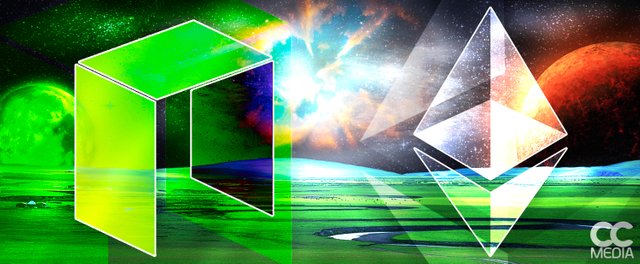
Ethereum - First Mover Advantage
Ethereum has the first mover advantage and that is the major reason for it to acquire thousands of decentralized applications to run on its blockchain. Most of the ICOs announce their ERC20 tokens that run on Ethereum Blockchain. Ethereum not only has first mover advantage, but it is also widely accepted and it can be easily funded from across the globe. Investors can easily buy ETH with fiat currency globally since the Eth-Fiat pair is supported in almost all the exchanges.
Ethereum also has a wide range of dApps running on its blockchain that adds value to the ecosystem. They have thousands of decentralized applications that have different functionalities and so it is very difficult to dethrone Ethereum from the top spot. NEO, or any other competitor, would need for its native or associated cryptocurrencies to be more widely used and also offer a more robust blockchain to replace Ethereum.
Ethereum also has some major flaws that have seemingly given its competitors the edge to develop better and more scalable blockchain all while also supporting decentralized applications. Scalability and transaction fees in terms of GAS cost are factors that are considered as drawbacks of Ethereum, which it now seems is giving opportunities for other blockchains to compete with it and also campaigning to be "Next Ethereum" or "Ethereum Killer". NEO is one such newly developed blockchain that is widely called as "Chinese Ethereum" since its founders are in China and the project is supported by the Chinese government.
NEO - Chinese Ethereum
NEO is considered as "Chinese Ethereum" and it is competing with Ethereum directly to acquire more applications and Smart Contracts. NEO follows the advanced Proof of Stake algorithm called "Delegated Byzantine Fault Tolerance". It can handle 1000 transactions per second and they are aiming for 10k TPS. Meanwhile, Ethereum uses proof-of-work and they have also proposed to move to proof-of-stake in future due to scalability issues.
NEO is a Smart Contract system that integrates Digital Identity and Digital Assets to become a "Smart Economy". "Digital Identity" is like KYC on the blockchain and it can help authorities to identify the individuals participating in the token sale. "Digital Assets" are assets that are placed on the blockchain for sale. For example, one can announce tokens for physical diamonds and sell the corresponding tokens to a new user to change the ownership and this sale and the new user details will be verifiable on the blockchain. This is the way "Smart Economy" is intended to work, thereby attempting to integrate the normal economy into blockchain.
NEO also has its own flaws in the form of security and robustness. Its blockchain came to a standstill on 6th March 2018 when one of its consensus nodes went offline. The network stopped functioning when one of the seven nodes needed for consensus went down. This created a lot of bad press for NEO and raised a big question about its reliability. NEO is also very costly for dApps and smart contract developers, compared to Ethereum.
Ethereum and NEO
Ethereum and NEO - Both are competing with each other directly. They both have advantages and disadvantages over one another. Below are some of them listed for both Ethereum and NEO.
The Advantage of Using NEO for Smart Contracts:
- Scalability issues addressed and can handle 1000 TPS.
- It is more regulator friendly and so its chances of shutdown due to governmental pressure pressure is less.
- It requires less energy since it uses "Proof of Stake" algorithm.
- Transaction fees in terms of GAS are very less compared with Ethereum.
- GAS is another cryptocurrency and can be acquired by staking NEO whereas Ethereum uses its only token ETH as GAS.
- It can support multiple programming languages compared to Ethereum which only accepts Solidity to develop applications.
- Ethereum has backing from corporate clients and thousands of decentralized applications run on its blockchain.
- Its currency Ether is listed on almost all the exchanges for any investor to buy and fund ICOs, whereas NEO is not available that widely.
- Both Ethereum and NEO are highly centralized, due mainly to a relatively small group of people making a lot of decisions related to the respective platforms. But we can argue that Ethereum is more decentralized than NEO, due to the fact that 50% of the NEO tokens are still held by the creators of NEO.
- Ethereum cannot be replaced that easily since it is very difficult to move all the existing dApps and Smart Contracts from the Ethereum blockchain to another network altogether, even if the new blockchain is more user-friendly and robust.
Posted from my blog with SteemPress : https://cryptocoremedia.com/ethereum-and-neo-dapps-compete/